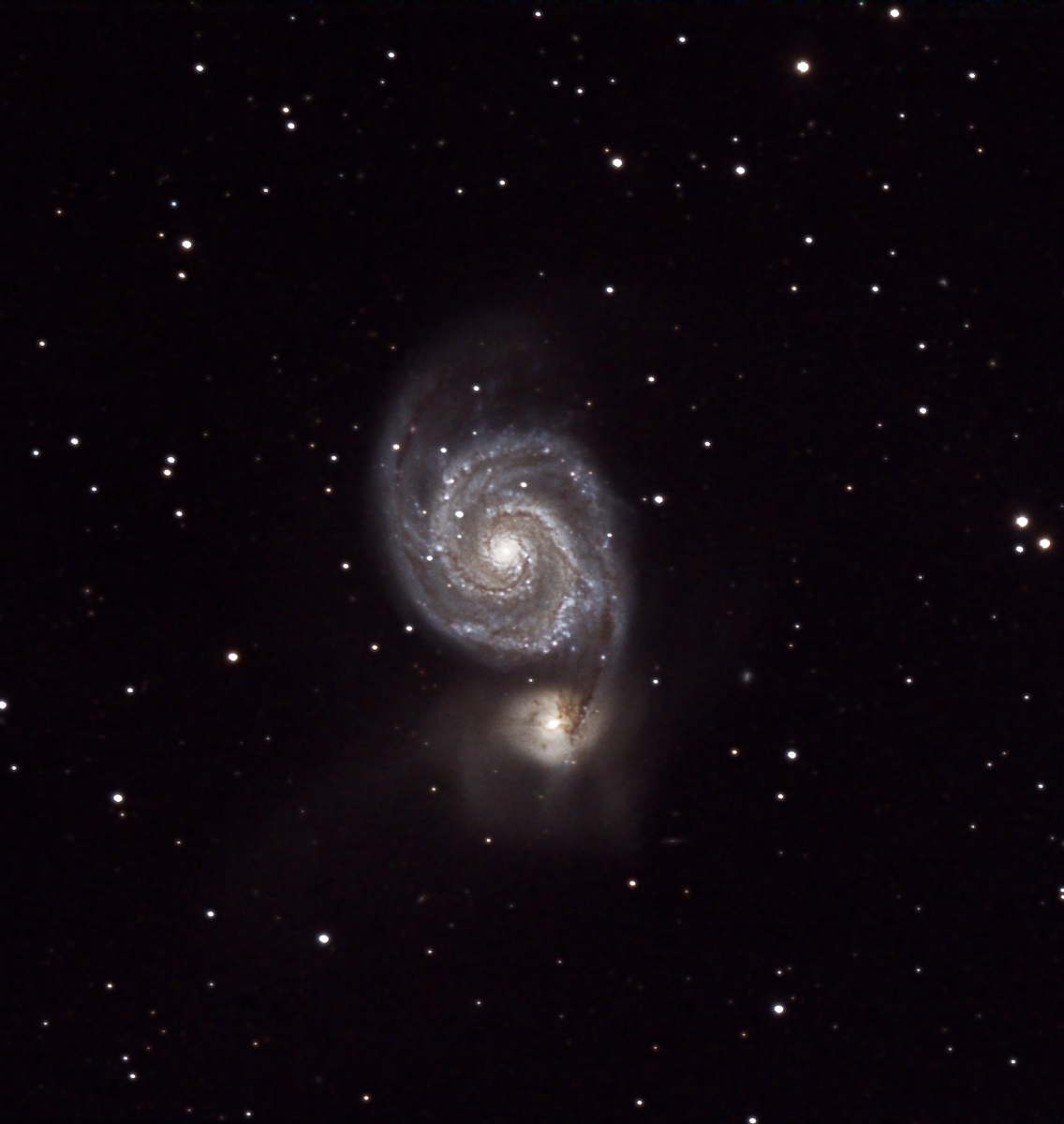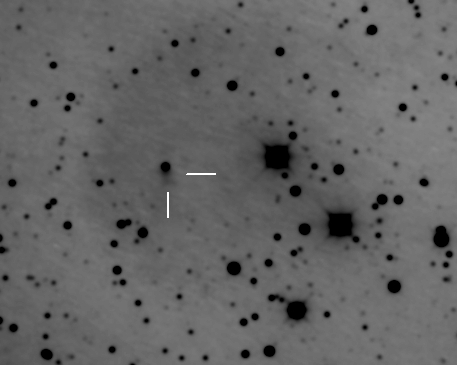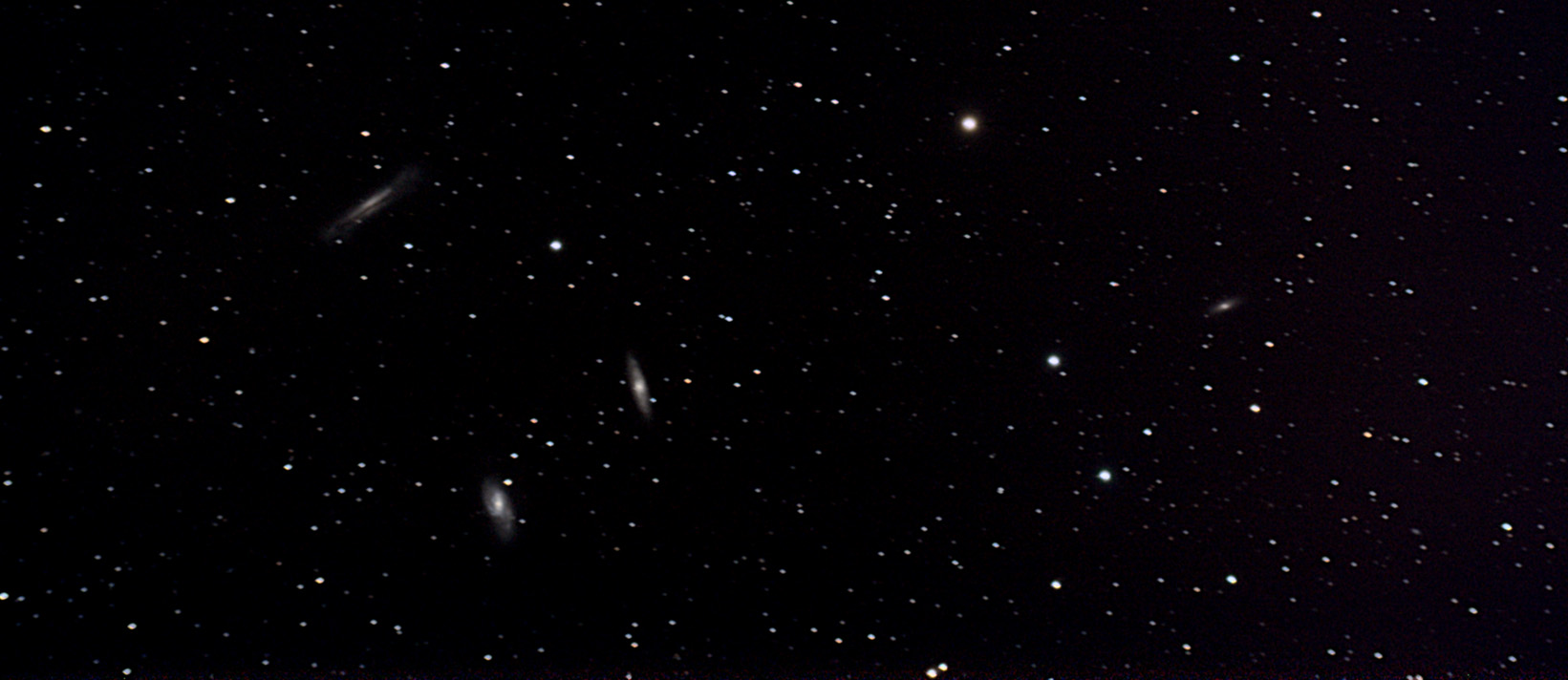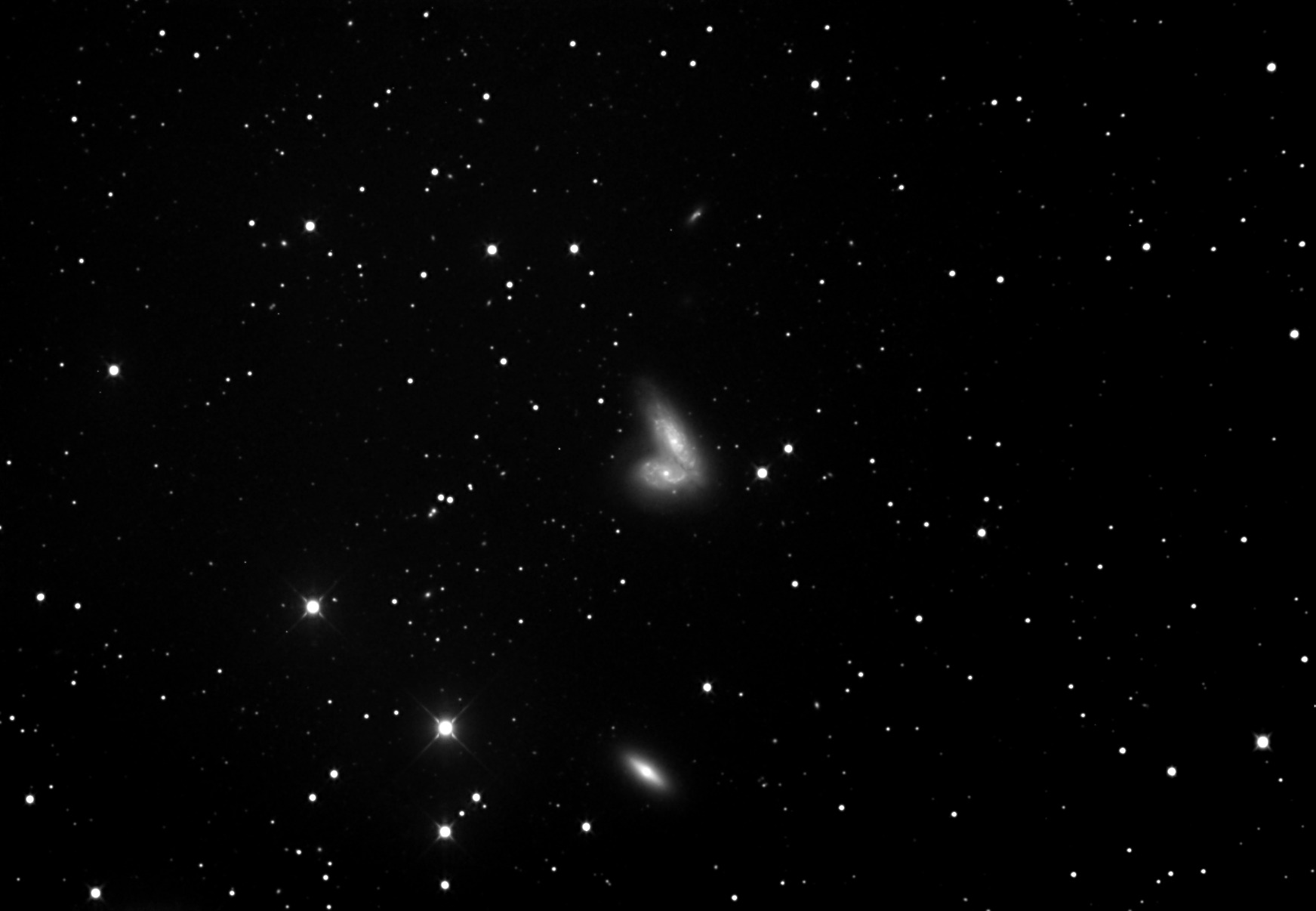I’ve resisted imaging M51 for a while now with the feeling that the world doesn’t need yet another picture. However, my recent rough and ready image and Dan’s work convinced me that this really is one of my favourite night sky objects. So, I gathered 60 minutes of exposure time on GRAS-3 in 5 minute sub-frames. The results, while nice to look at lacked some definition in the finer detail and I found myself wondering what rather more exposure time would do for the image. The following night I gathered another 60 minutes and, when added in, the difference was stunning. Detail in the dust lanes that had been rather blurred before leapt out of the screen and this was before any additional processing had been done.
I made several attempts at processing the results before settling on this image. I’ll probably return to this in the future and try and enhance the tidal tail of stars that have been swept out by this galactic close encounter.
| Telescope: | Takahashi TOA-150 | |
| Camera: | FLI ML8300 Single shot colour | |
| Exposure: | 25x 300s |





